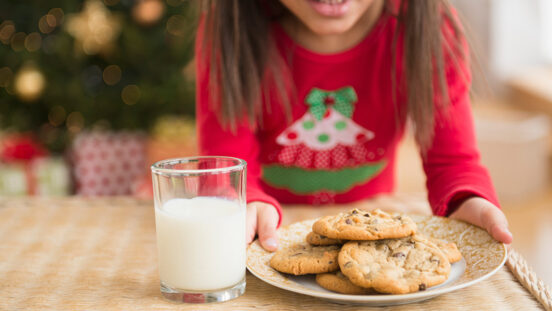Top 10 baby safe sleep questions from new parents, answered by Red Nose Chief Midwife
"Accidents happen when babies suffocate or get trapped in their sleeping environment."
Created by Red Nose in 2017, Safe Sleep Week (6 to 12 March, 2023) aims to raise awareness for safe sleeping recommendations and to equip new parents with the practical information they need to keep baby safe while sleeping.
Over the COVID period, the Red Nose Safe Sleep Advice Line fielded more than 3000 queries from worried new parents – a jump of 20% compared to pre-pandemic.
What to do when baby starts rolling, safe swaddling, and questions about bassinets, bouncers and hammocks top the list of queries to our specially trained Red Nose safe sleep educators across Australia who respond to the calls and emails.

When new parents are feeling overly tired they may accidentally co-sleep or fall asleep while holding, feeding or comforting their baby.
As Australia’s leading baby safe sleep organisation, Red Nose says it’s vital that parents reach out and ask for expert advice whenever they’re unsure of what they can do to prevent SIDS and fatal sleeping accidents.
These accidents happen when babies suffocate or get trapped by things in their sleeping environment – which can include soft toys, loose blankets or pillows.
Red Nose Chief Midwife Jane Wiggill says, “Safe Sleep Week is all about getting these messages out there, ensuring parents get the practical advice they need to keep their baby safe.”
Top 10 baby safe sleep questions answered by Red Nose Chief Midwife Jane Wiggill
1. “My 5-month-old baby is rolling when sleeping & wants to sleep on his tummy. I have tried tucking the sheet & blanket in really tightly, but he still rolls. What do I do?”
The safest sleeping environment for a baby this age is in a cot with a firm mattress with a tight fitted sheet. Have baby in a baby sleeping bag, instead of using blankets and ensure your baby’s arms are free and there is no hood on the sleeping bag. If you see that your baby has rolled onto their tummy, gently roll them back onto their back while they are still asleep.
2. “My 4-month-old baby is rolling, but still has startle reflex – how long should I take to transition out of swaddle?”
When a baby can roll, it is no longer safe to swaddle them with their arms in, because they are unable to move themselves into a position of safety by pushing themselves up and away from the mattress. If you really need to transition your baby from swaddling rather than ceasing cold turkey, you can do this by wrapping them with one arm out for a night, then both arms out for the following night and then just their chest wrapped the following night.

When a baby can roll, it is no longer safe to swaddle them with their arms in.
3. “Can I sleep my baby in a hammock or similar device?”
No. Sleeping babies in devices that are not firm and flat are very dangerous for them. This is because surfaces like these encourage a baby’s head to tip forward, pushing their chin towards their chest. This can make it difficult for the baby to breathe and can increase their risk of suffocation.
4. “Are all products sold in Australia safe for baby to sleep in – e.g bouncinette, nests?”
Unfortunately no. It is often assumed that all nursery products for sale in Australia are safe, but this isn’t the case. Products like these encourage chin-to-chest positioning, which can lead to a baby suffocating by accidentally covering their face, CO2 rebreathing and/or overheating. All of these hazards can increase the risk of sudden infant death.
5. “What about bassinets? Are they safe?”
A bassinet is often a useful sleep environment for a new baby, particularly in the first few months and may be a safe alternative to a cot in a parent’s room. However, parents should know that there are no Australian Mandatory Safety Standards for bassinets, while there are for cots. So there are some risks associated with bassinets, largely due to incorrect use, the use of soft, loose blankets or sheets, and also falls risk. A baby who rolls should never be in a bassinet.

A bassinet may be a safe alternative to a cot in a parent’s room.
6. “What is the safest/most effective way to swaddle/wrap a baby?”
Red Nose recommends using fabrics such as muslin, a light cotton sheet or bamboo wraps to swaddle babies. Thicker fabrics, bunny rugs and blankets are not as safe for wrapping as they may cause overheating. For wrapping to be effective, the wrap needs to be firm, but not too tight – allowing for movement of the baby’s legs and expansion of their chest. Do not wrap baby higher than their shoulders, to ensure that their face and head don’t become covered.
7. “What is SUDI?”
Sudden Unexpected Death in Infancy (SUDI) occurs in babies less than 12 months old and includes SIDS (Sudden Infant Death Syndrome) and also fatal sleeping accidents.
8. “Are there any specific safe products designed for baby to sleep in?”
No. There are specific products that reduce the risk of SUDI. Red Nose recommends that baby is placed for sleep in a cot or portacot that meets the Australian Mandatory Safety Standard. For cots, look for this safety standard on packaging: AS/NZS 2172. For portacots, look for AS/NZS 2195.
9. “My parents smoke, but only outside, then wash hands before picking up my baby. Is this safe?”
The safest place for baby is in a totally smoke-free environment before and after birth. However, the impact on baby’s brain and airways when exposed to smoke is ‘dose related’ – the greater the exposure, the greater the risk.
10. “My mother told me she always placed me for sleep on my tummy and I was ok. She said my baby is more likely to choke on her back. Is this true?”
No. When a baby lies on their back, their upper airway sits above their oesophagus, where regurgitated milk ascending the oesophagus is readily swallowed again, avoiding aspiration into the respiratory tract. This reduces the risk of choking and respiratory distress. Swallowing is one of the airway protection reflexes that babies have, and it works best when they’re lying on their back. It’s important to remember the sudden infant death rate has decreased by 85% in Australia since the 1980s – since safe sleeping recommendations were introduced.
The Red Nose 6 Safe Sleep Recommendations are:
1. Place bub on their back, no need for them to sleep on their tummy or side. 2. Keep bub’s head and face uncovered. Covering bub’s face or head with clothing like hats or headbands increases the risk of sudden infant death. 3. Keep your bub smoke-free before and after birth. Having a smoke-free home and a smoke-free family is the best way to protect bub’s breathing. 4. Safe sleeping environment for bub all day and all night. A good firm, clean and flat mattress in a safe cot is best. No need for blankets, soft bedding, toys, pillows or bumpers in the cot. 5. Sleep bub in your room for the first 6-12 months. 6. Breastfeeding bub is better.
Red Nose Safe Sleep Advice Line: 1300 998 698




